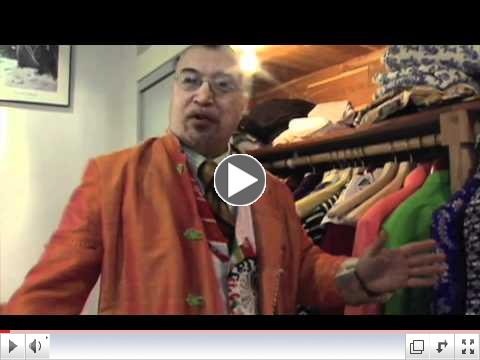 | | Revolutionary Style Politics of Fred Ho: Mau Mao |
Bill Fletcher on the
Passing of Fred Ho
|
Chicago: May 16-17
on Police Crimes
in defense of democracy and
to end racist and political repression
Featuring Angela Davis University of Chicago
International House1414 E. 59th St, Chicago IL 60637
|
 | |
Journal of the Black Left Unity Network
|
|

New CCDS Book Reporting on Vietnam
|
 The new annual edition of our journal of discussion and analysis is now out. More than 130 pages, it includes 20 articles on organizing, racism and the right. Cost is $10 plus shipping. Or get one by becoming a sustainer. Click the title to buy it directly. The new annual edition of our journal of discussion and analysis is now out. More than 130 pages, it includes 20 articles on organizing, racism and the right. Cost is $10 plus shipping. Or get one by becoming a sustainer. Click the title to buy it directly.
|
Blog of the Week... 
|
|
Radical Jesus:
A Graphic History of Faith 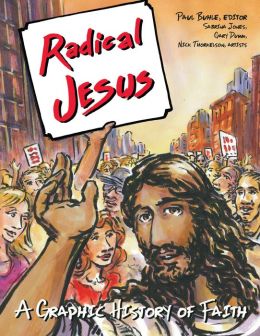 By Paul BuhleHerald Press By Paul BuhleHerald Press
|

Want to Know what CCDS has
been doing...Check it Out!
|
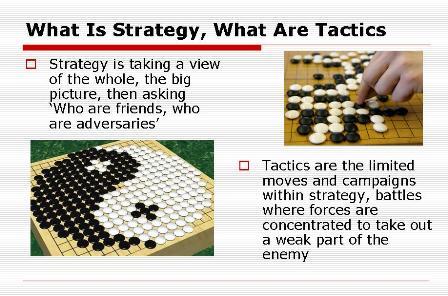 Keep On Keepin' On Keep On Keepin' OnWhy Socialists Run in Elections, Strategy and Tactics Slide Slow, Class and Privilege, the Green New Deal ...and other Short Posts on Tumblr by Carl Davidson
|

Edited by Carl Davidson Revolutionary Youth the the New Working Class: The Praxis Papers, the Port Authority Statement, the RYM Documents and other Lost Writings of SDS
Changemaker, 273pp, $22.50
For the full contents, click the link and view 'Preview' under the cover graphic.
|
|
By Randy Shannon, CCDS

"Everyone has the right to work, to free of employment, to just and favorable conditions of work and to protection against unemployment."
- United Nations Universal Declaration of Human Rights, December 10, 1948
I. Introduction
The "Great Recession" that began in 2007 has caused the greatest percent of job losses since the Great Depression of 1929. This crisis is the end of an era of unrestrained 'neo-liberal' capitalism that became public policy during the Reagan administration. The crisis marks a new level of instability with the growth of a global financial elite that targeted US workers and our trade unions after World War II.
|
|
Order Our
Full Employment Booklets
 |
...In a new and updated 2nd Edition
Capitalism may well collapse under its own excesses, but what would one propose to replace it? Margaret Thatcher's mantra was TINA...There Is No Alternative. David Schweickart's vision of "Economic Democracy" proposes a serious alternative. Even more fundamentally, it opens the door to thinking about alternatives. His may or may not turn out to be the definitive "successor system," but he is a leader in breaking out of the box. |
 by Paul KrehbielAutumn Leaf Press, $25.64
by Paul KrehbielAutumn Leaf Press, $25.64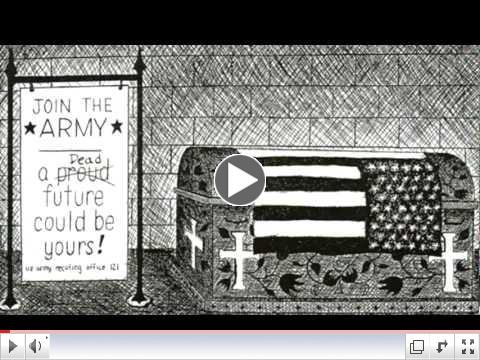 | | Shades of Justice Video: Bringing Down a President, Ending a War |
|
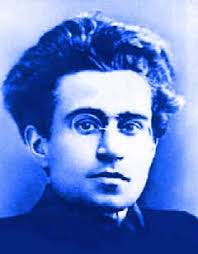 By Giuseppe Fiori
Verso, 30 pages
|

Essays on Mondragon, Marx, Gramsci
and the Green and Solidarity Economies |
Solidarity Economy:What It's All About

Edited by Jenna Allard, Carl Davidson and Julie Matthaei
Buy it here...
|

- Foreword by Susan Brownmiller
- Preface by Ken Wachsberger
$37.50 + $6 shipping
|
|
Discussion Documents for a Militant Movement
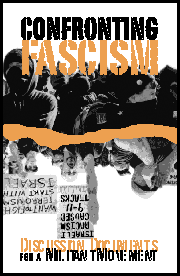
By Don Hamerquist
|
|
|
|
An Invitation to CCDSers and Friends...
 Defending Ourselves, Defending Ourselves,
in the Courts, in the
Streets, in the Voting
Booths, Everywhere!
We're the Committees of Correspondence for Democracy and Socialism...Do you have friends who should see this? Pass it on...Do you have a blog of your own? Others you love to read every day? Well, this is a place where you can share access to them with the rest of your comrades. Just pick your greatest hits for the week and send them to us at carld717@gmail.com! Most of all, it's urgent that you oppose war on Iran, defend voter rights, plan for 2014 races now, oppose austerity, support the 'Moral Mondays' in North Carolina, the Congressional Progressive Caucus' 'Back to Work Budget'! We're doing more than ever, and have big plans. So pay your dues, make a donation and become a sustainer. Do it Now! Check the link at the bottom... |
Cecily McMillan, An Occupier, and Occupy, on Trial

By Maurice Isserman Dissent Magazine
April 14, 2014 - Cecily McMillan has had trouble concentrating on the master's thesis she is supposed to be writing this spring under my direction at the New School in New York City, a study of the political beliefs and career of the late, great socialist, pacifist, and civil rights campaigner Bayard Rustin.
It's not that Cecily has writer's block and has been avoiding the library (if only it were that). Rather, she is spending far too much of her time in the defendant's seat in a courtroom in New York City Criminal Court in Lower Manhattan. There she is facing charges of felony assault on a police officer in Zuccotti Park, birthplace of Occupy Wall Street, on March 17, 2012.
On that day a demonstration took place in the park to mark the six-month anniversary of the original occupation. When the police moved in to clear the park, making scores of arrests, Cecily was caught in the melee. Her trial, billed as the last Occupy trial, began this past week, on Monday, April 7, and has drawn national and international media attention. On Friday, the newly seated jury heard opening arguments from the prosecution and from Cecily's lawyers. The case is expected to last another two weeks. If convicted, she could be sentenced to seven years in prison.
I have known Cecily for nearly three years. I met her when I was invited to speak at a Democratic Socialists of America youth section gathering in the Catskills in the summer of 2011. Cecily, then twenty-two years old, was a recent college graduate (Lawrence University in Appleton, Wisconsin) and a veteran of the previous winter's Madison, Wisconsin protests against Governor Scott Walker's anti-labor policies. She was obviously in her element in a political gathering-self-confident, vocal, and, in that much abused term, charismatic. A leader. And also (and this doesn't always go with the territory) generous and empathetic. My seventeen-year-old son, a high school student, was attending his first socialist meeting, over-awed by the older, worldly college students surrounding him, and I was deeply grateful when Cecily took him under her wing. So, a leader-but with a pronounced maternal instinct.
Cecily went off to New York that August to begin her graduate studies at the New School. And I was not terribly surprised when, in October, I came across her name in a New York Times story about Occupy Wall Street, on its one-month anniversary. I learned that she had been involved with Occupy from the earliest planning sessions in August. And I was pleased to see that she was in the faction that thought Occupy should put forward concrete demands, if it was going to be taken seriously and broaden its support. As the Times reported:
[P]olitically active members like Cecily McMillan and David Haack, who first proposed formulating demands in a pre-campout planning meeting in August, said they were ready to take action. Mr. Haack, who in 2009 tried to run for the White Plains City Council, admitted feeling disillusioned after the group struck down their proposal in August, but now he feels inspired by the movement's "true democratic process," even if it means slower progress going forward.
"Let's give ourselves two weeks," Ms. McMillan said about presenting provisions to the General Assembly. Ms. McMillan, 23, a New School graduate student, feels such dedication to the cause that she has contemplated taking a sabbatical from her studies - but she has begun to worry that the movement could become "a joke" without specific goals. Still, with the right demands, she said, more union members and diverse contingencies could join.
In other words, within the spectrum of political tendencies represented in Occupy, Cecily represented the Michael Harrington/democratic socialist "left wing of the possible" perspective, which never turned out quite as influential as the anarchist/utopian wing (alas)....(Click title for more)
|
|
Remembering CCDS's Carl Bloice, Revolutionary

Written by a Group of His Friends, via Portside.org
Carl Bloice, a brilliant journalist, political theorist, and teacher who inspired and mentored generations of activists in the U.S. and around the world for more than five decades, died in San Francisco April 12 after a long battle with cancer. He was 75.
From a courageous stint as what is believed to be the first Northern reporter to cover the 1960s Civil Rights movement in the South to editing the West Coast People's World newspaper to his years as the People's Daily World Moscow correspondent during the turbulent final five years of the Soviet Union to stinging commentary as a prominent blogger for left and African American publications, Bloice paved one groundbreaking path after another.
"Carl taught me to be a journalist, that journalism mattered, and that it was the thing that saved us from the humiliation of silence in the face of injustice. His absence creates a vacuum in our world--and my world-- that simply cannot be filled," said longtime University of California Santa Cruz journalism professor Conn Hallinan, who was with Bloice first in the San Francisco civil rights movement and anti-Vietnam war movement at the University of California, Berkeley, and later at the People's World.
"Brother Carl was a fighter for working people and his writing could be described as advocacy journalism with barbs," said Peter Gamble, publisher of BlackCommentator.com on whose editorial board Bloice served. "He was a loyal friend to those who had the fortune to know him. We will miss Carl very much, but his soul will live on in our hearts and provide some of the energy needed to continue the struggle."
Longtime San Francisco peace, labor and community activist Giuliana Milanese, one of Bloice's oldest and closest friends, recalled him as "a reflective comrade, unfailing in his commitment to justice, and his steadfast vision, not based on leaders who come and go but on ideas that create change. Carl never gave up the fight for a better world."
Bloice was born January 28, 1939 in Riverside, Ca. As a teenager, living in South Central Los Angeles, he began his own political activism early in civil rights activities as a member of the Liberal Religious Youth, the Unitarian Universalists' youth organization, in Los Angeles.
For a time, Bloice planned a life in the ministry of the Unitarian Church. But his activism and work with others in the burgeoning civil rights movement led him in another direction.
By the age of 20, Bloice had joined the U.S. Communist Party. This was a time, noted the late Franklin Alexander, one of Bloice's early friends, and fellow young African American CP recruit, that it was hard to get in the door with many leaving in the wake of the Red Scare, anti-Communist repression in the U.S., and the post-Stalin revelations in the Soviet Union.
By the early 1960s, Bloice, then a poet and prose writer, moved to the San Francisco Bay Area. There he joined the staff of the People's World, beginning a three-decade association that would establish him firmly as a rare journalist who influenced readers and activists around the world.
"I remember going to meetings in L.A. where there was an FBI car parked outside, and agents taking down the license number of every car in the block," Bloice would later tell the San Francisco Chronicle. "Members were kept under surveillance, and people victimized just because they bought this newspaper."
Though affiliated with the CP, the People's World had achieved a broad renown as a voice of the progressive and working class left from its early days as the Western Worker, when it was a leading chronicler of the 1934 San Francisco General Strike, the struggles of West Coast longshore workers and other unions, and the infamous Zoot Suit attacks on Latino youth by off-duty while sailors and Marines in Los Angeles in 1943.
Under Bloice, first as a staff writer, then editorial board member, then editor, that tradition continued. By the 1980s, Bloice would happily display a plaque, the Toronto Globe and Mail would note, from the City of Berkeley in his then Berkeley office at the old Finn Hall recognizing his achievements in "profoundly partisan journalism."
In 1962, Bloice with others founded the first chapter of the W.E.B. Du Bois Clubs, a multi-racial, national youth organization, named for the legendary NAACP co-founder, journalist, author and educator. In San Francisco, the DuBois Clubs gained quick notice for leading desegregation fights targeting drive-in restaurant chains, the San Francisco hotel industry and automobile sales rooms that systematically discriminated against African-Americans in hiring. Bloice was also the group's publications editor.
During that time, the Los Angeles Times cited Bloice as a leader of the University of California Berkeley's Free Student Union and Vietnam Day Committee, successors to the UC Berkeley Free Speech Movement, along with other prominent free speech and anti-Vietnam war activists, including later Yippee prankster Jerry Rubin, Conn Hallinan, Robert Scheer, who went on to become a well known journalist, and many others....(Click title for more)
|
|
"They first had to win the moral high ground": The Reverend William Barber. Gerry Broome/AP Photo
The Reverend William Barber is charting a new path for protesting Republican overreach in the South-and maybe beyond.
By Lisa Rab
Mother Jones
April 14, 2014 - On a recent Sunday afternoon, the Reverend William Barber II reclined uncomfortably in a chair in his office, sipping bottled water as he recovered from two hours of strenuous preaching. When he was in his early 20s, Barber was diagnosed with ankylosing spondylitis, a painful arthritic condition affecting the spine. Still wearing his long black robes, the 50-year-old minister recounted how, as he'd proclaimed in a rolling baritone from the pulpit that morning, "a crippled preacher has found his legs."
It began a few days before Easter 2013, recalled Barber, pastor at the Greenleaf Christian Church in Goldsboro, North Carolina, and president of the state chapter of the National Association for the Advancement of Colored People (NAACP). "On Maundy Thursday, they chose to crucify voting rights," he said.
"They" are North Carolina Republicans, who in November 2012 took control of the state Legislature and the governor's mansion for the first time in more than a century. Among their top priorities-along with blocking Medicaid expansion and cutting unemployment benefits and higher-education spending-was pushing through a raft of changes to election laws, including reducing the number of early voting days, ending same-day voter registration, and requiring ID at the polls. "That's when a group of us said, 'Wait a minute, this has just gone too far,'" Barber said.
Barber "believed we needed to kind of burst this bubble of 'There's nothing we can do for two years until the next election.'"
On the last Monday of April 2013, Barber led a modest group of clergy and activists into the state legislative building in Raleigh. They sang "We Shall Overcome," quoted the Bible, and blocked the doors to the Senate chambers. Barber leaned on his cane as capitol police led him away in handcuffs.
That might have been the end of just another symbolic protest, but then something happened: The following Monday, more than 100 protesters showed up at the capitol. Over the next few months, the weekly crowds at the "Moral Mondays" protests grew to include hundreds, and then thousands, not just in Raleigh but also in towns around the state. The largest gathering, in February, drew tens of thousands of people. More than 900 protesters have been arrested for civil disobedience over the past year. Copycat movements have started in Florida, Georgia, South Carolina, and Alabama in response to GOP legislation regarding Medicaid and gun control.
With Moral Mondays, Barber has channeled the pent-up frustration of North Carolinians who were shocked by how quickly their state had been transformed into a laboratory for conservative policies. "He believed we needed to kind of burst this bubble of 'There's nothing we can do for two years until the next election,'" explains Al McSurely, a longtime NAACP organizer. But what may be most notable about Barber's new brand of civil rights activism is how he's taken a partisan fight and presented it as an issue that transcends party or race-creating a more sustained pushback against Republican overreach than anywhere else in the country.
Barber's activism is rooted in his family's history. In the 1960s, his parents moved back to eastern North Carolina from Indianapolis to help desegregate the local schools. His father, also a preacher, taught science at a formerly all-white high school. His mother became the school's first black office manager. Students called her "nigger" before they finally learned to call her "Mother Barber."...(Click title for more)
|
By Grace Wyler
Progressive America Rising via Vice News
April 16, 2014 - For two decades the US government has tried to get Cliven Bundy to remove his cows from federal land, and for two decades the Nevada rancher has steadfastly refused, defying court orders and attempts to negotiate a settlement for the $1.1 million he owes in federal grazing fees. Finally, last week, the Bureau of Land Management (BLM) took matters into its own hands and started seizing cattle that had been illegally grazing on government property. Things went downhill from there.
What began as an arcane land dispute rapidly escalated into an armed standoff in the desert. A ragtag band of anti-government militants, Tea Party politicians, and Old West ranchers descended on the area, responding to a call to arms posted by the Bundy family on their blog and circulated throughout the internet by conservatives and libertarians. Spurred on by YouTube videos of physical altercations between federal agents and the Bundys, the protesters aggressively confronted law enforcement, which in turn escalated things by gathering a huge force of armed BLM rangers and FBI agents. On Friday, the Federal Aviation Administration placed a month-long flight restriction over the ranch after the Bundy family posted aerial photos of the assembled authorities.
For right-wing militias and paramilitary groups founded around a collective paranoid belief that the federal government is just looking for an excuse to impose martial law, images of armed federal agents forcibly seizing cows basically means it's DEFCON 1. By Saturday, as many as 1,000 anti-BLM protestors from as far away as Virginia, New Hampshire, and Georgia had set up camp in Bunkerville, an arid patch of land where the BLM was rounding up the Bundy cattle. Packing handguns and assault rifles, the protesters carried signs featuring slogans like "Tyranny Is Alive," "Where's the Justice?" and "Militia Sighn In [sic]," and many said they were prepared for a shoot-out with the federal government. The mood was such that even Glenn Beck was wary of the crowd, announcing on his show that "there's about 10 or 15 percent of the people who are talking about this online that are truly frightening."
"We were prepared to do whatever it takes to protect their cattle, and their ranch, and their home," said protester Richard Mack, a former Arizona sheriff who is on the board of Oath Keepers, a militia founded by a former Ron Paul aide and made up mostly of current and former US military personnel and law enforcement. "The government was prepared to do anything, including shooting at unarmed people." (On Monday Mack told Fox News that organizers had been "strategizing to put all the women up front" in a firefight so that the image of the BLM shooting women would be televised.)
The government blinked first, announcing Saturday afternoon that it would stop seizing Bundy's cattle because of "grave concern about the safety of our employees and members of the public." A few hours later, protesters stormed the BLM's corrals, demanding that the bureau release the 400 cows it had already captured....(Click title for more)
|
 By Shamus Cooke By Shamus Cooke
Common Dreams
April 17, 2014 - Seattle's corporations were blindsided, it all happened so fast. Socialist candidate Kshama Sawant's successful City Council campaign tore through Seattle politics like a tornado, leaving the 1% devastated, unable to cope with a storm they didn't see coming.
The Seattle elite had no way to counter her arguments, silence her supporters, or keep her from gathering a tidal wave of support for the $15 campaign. The establishment was paralyzed, powerless. (Image: 15now.org)
But Sawant's election victory was just the beginning of the humiliation for Seattle's super wealthy. After singlehandedly transforming city politics, Sawant used her newly elected bully pulpit to torment the mayor and City Council and harangue Seattle's corporations, while simultaneously mobilizing thousands in the streets to bulldoze through her progressive agenda. The 1% had absolutely no idea what to do - they'd never experienced anything like it. They conceded defeat and agreed to a $15 minimum wage - in words.
Sawant didn't buy it, refusing to declare victory until it was in her hands. After the mayor and the City Council created a committee to implement the $15 minimum wage, Sawant was busy sounding the alarm bells, correctly predicting that such a radical change would never be accepted without a fight by Seattle's 1%, who would eventually recover from their shell shock and re-group to attack.
That attack is now beginning. But a direct assault isn't yet possible. Sawant's position is fortified by her broad-based support, the result of her devastatingly effective campaign. Thus, the 1% are playing a long game, using a combination of tried and true tactics, where they'll "agree" to Sawant's demands on one hand, while slandering her as an "extremist" on the other, all the while proposing a plan for $15 with just enough loopholes to render it meaningless. For example, the corporations want a $15 that includes "total compensation," meaning that any benefit - like health insurance costs - could be counted as part of a worker's wage, thus changing the definition of minimum wage.
These are some of the tactics being employed by the newly-formed Seattle corporate front group "One Seattle," whose members include some of the largest corporations in the world, and who collectively despise Sawant nearly as much as she hates them. The "middle ground' in this conflict doesn't exist.
Which leads to another tactic of One Seattle: creating the illusion of a middle ground - the super wealthy plan to use middle class small business owners as proxies in this war, since "mom and pop" are more lovable than Starbucks' multimillionaire CEO.
This corporate tactic to win the hearts and minds of the public by putting forward the friendly face of small business owners was recently exposed by Seattle's weekly newspaper "The Stranger," who revealed a leaked memo from 'One Seattle' which detailed the "small business strategy," as well as other above-mentioned tactics that Seattle's biggest corporations were going to use to undermine Sawant and the $15 Now campaign....(Click title for more)
|

From China to Ukraine, the US is pursuing its longstanding ambition to dominate the Eurasian landmass
By John Pilger
Beaver County Peace Links via The Guardian
I watched Dr Strangelove the other day. I have seen it perhaps a dozen times; it makes sense of senseless news. When Major TJ "King" Kong goes "toe to toe with the Rooskies" and flies his rogue B52 nuclear bomber to a target in Russia, it's left to General "Buck" Turgidson to reassure the president. Strike first, says the general, and "you got no more than 10-20 million killed, tops". President Merkin Muffley: "I will not go down in history as the greatest mass murderer since Adolf Hitler." General Turgidson: "Perhaps it might be better, Mr President, if you were more concerned with the American people than with your image in the history books."
The genius of Stanley Kubrick's film is that it accurately represents the cold war's lunacy and dangers. Most of the characters are based on real people and real maniacs. There is no equivalent to Strangelove today because popular culture is directed almost entirely at our interior lives, as if identity is the moral zeitgeist and true satire is redundant, yet the dangers are the same. The nuclear clock has remained at five minutes to midnight; the same false flags are hoisted above the same targets by the same "invisible government", as Edward Bernays, the inventor of public relations, described modern propaganda.
In 1964, the year Dr Strangelove was made, "the missile gap" was the false flag. To build more and bigger nuclear weapons and pursue an undeclared policy of domination, President John F Kennedy approved the CIA's propaganda that the Soviet Union was well ahead of the US in the production of intercontinental ballistic missiles. This filled front pages as the "Russian threat". In fact, the Americans were so far ahead in production of the missiles, the Russians never approached them. The cold war was based largely on this lie.
Strategic nuclear missiles Cold War National Museum of the US Air Force Strategic nuclear missiles from the cold war. Photograph: Alamy
Since the collapse of the Soviet Union, the US has ringed Russia with military bases, nuclear warplanes and missiles as part of its Nato enlargement project. Reneging on the Reagan administration's promise to the Soviet president Mikhail Gorbachev in 1990 that Nato would not expand "one inch to the east", Nato has all but taken over eastern Europe. In the former Soviet caucuses, Nato's military build-up is the most extensive since the second world war.
In February, the US mounted one of its proxy "colour" coups against the elected government of Ukraine; the shock troops were fascists. For the first time since 1945, a pro-Nazi, openly antisemitic party controls key areas of state power in a European capital. ...(Click title for more)
|
 | | THE HIP-HOP FELLOW TRAILER |
Documentary Directed by Kenneth Price
By Shannon M. Houston
Paste Magazine
There will be a time, hopefully, when scholars, theorists and music fans will no longer have to argue for the validity and cultural significance of hip-hop. And hopefully, a hip-hop theory course at Harvard University will one day cease to be such a thing of excitement, such an anomaly, that it would require and inspire a documentary like The Hip-Hop Fellow.
But for the time being, rap and academia are still getting acquainted with one another. Although many academics have seen the theoretical depth in rap music for years-like Gwendolyn D. Pough who wrote Check It While I Wreck It back in 2004 and Tricia Rose, author of Black Noise-many are still just catching on. But not to worry-Grammy Award-winning producer 9th Wonder (AKA Patrick Douthit) is working toward creating a new generation of hip-hop theorists through his lectures and research as a recently tenured professor at Harvard University. Emmy Award-winning documentary filmmaker Kenneth Price delves back into a familiar world (he directed The Wonder Years with 9th Wonder in 2011) to bring us the story of a producer-turned-professor, and the hip-hop enlightenment coming to the Ivy Leagues.
The Hip-Hop Fellow starts out as a profile of sorts on 9th Wonder. After working with everyone from Destiny's Child to Ludacris and Jay Z, he found himself led to teach, with positions at both Duke University and Harvard. For a whole year, he flew between North Carolina and Boston to teach at both places, but the documentary focuses on his time teaching "The Standards of Hip-Hop" at Harvard, while also working on his own thesis project. The opening scenes also introduce us to Harvard's Hip-Hop Archives, run by Marcyliena Morgan and renowned critic and African-American scholar Henry Louis Gates Jr.
It's not that Douthit's backstory isn't a fascinating subject, and this introductory portion is indeed necessary, but the documentary really starts to take off when it branches out and begins to feel more like one of the producer's Harvard courses. Viewers are schooled on the art of the sample-and you will walk away understanding it as a true art form. Producer Young Guru explains the artistry behind creating a song with multiple samples and influences.
These are described as sound sources, and so sampling also creates lineage and a history that you can trace back to soul music, gospel, blues, rock and other genres. 9th Wonder likens it to a collage hanging in a fine art museum, while Henry Louis Gates (who started out in literary criticism) aligns rap producers with Formalist critics. He argues that sampling is to hip-hop what signifying is to literature. If we see intertextuality as an art form (as high literary art), then we must understand sampling in this way as well. Defining hip-hop albums (like Dr. Dre's The Chronic, Nas's Illmatic, and Jay Z's The Blueprint) also become focal points, where 9th Wonder and others (Kendrick Lamar, Ab-Soul and DJ Premier) offer commentary and personal stories about the impact of these works.
Price's second documentary falls into some clichés, and one wishes he could have gotten a little more creative with the interviews and given them an atypical bent. The Hip-Hop Fellow distinguishes itself from other films about rap like Ice T's Something From Nothing: The Art of Rap, which was primarily concerned with the lyricist, by being more concerned with production and also the political, social, and historical climates that brought about hip-hop music. Still, where Ice T's interviews were intimate (perhaps, in part, because he was a fellow rapper), Price's feel a bit bland.
Where The Hip-Hop Fellow brilliantly veers away from the cliché is in its willingness to critique the very subject and movement it celebrates. Multiple interviewees comment on the problematical nature of hip-hop entering the academic sphere often through people who are not necessarily "of the culture." 9th wonder himself takes issue with the fact that this highly important Hip-Hop Archive is at Harvard instead of a Historically Black College or University.
Ultimately, The Hip-Hop Fellow is an exciting look into the future. 9th Wonder is appropriately named, as one of a few in his field who is both "of the culture" and, now, of academia. His story and Price's story of a burgeoning world of hip-hop theory play like the coolest college course you never took. A few years from now it would be great to see Price check back in on the Hip-Hop fellow, or find a new subject to keep audiences abreast of in the ever-changing state of rap culture and music in the intellectual sphere.
Shannon M. Houston is a New York-based freelance writer, regular contributor to Paste, and occasional contributor to the human race via little squishy babies. You can follow her on Twitter.
|
|
This imaginative telling of a lost gem of American history offers a practical challenge to the neoliberal agenda
 A Freedom Budget for All Americans: Recapturing the Promise of the Civil Rights Movement in the Struggle for Economic Justice Today A Freedom Budget for All Americans: Recapturing the Promise of the Civil Rights Movement in the Struggle for Economic Justice Today
By Paul LeBlanc
and Michael D. Yates
Monthly Review Press 2013), 303pp.
Reviewed by Adam Tomes
CounterFire
This history of the Freedom Budget offers a challenge to the mainstream retelling of the story of the Civil Rights movement as well as the neoliberal economic agenda. It does this by being an inspiring history of the movement itself and its key characters in their aim to link 'racial justice for African Americans with the goal of economic justice for all Americans' (p.9).
By understanding the movement without the diluting and sanitizing effects of mainstream historians, it offers an insight into victories, defeats and individuals, altogether acting as a siren song to call activists to action. At the same time, the authors offer a concrete vision of what a 'different, more egalitarian and humane society' would look like (p.241). As such, this is a book not just for the historian but for the activist as well. It would make excellent reading for a study or book group, especially the final chapter that suggests a framework for a new Freedom Budget for the neoliberal world.
The Freedom Budget was proposed in 1966 by civil rights leaders including Martin Luther King Jr, Bayard Rustin and A. Philip Randolph. The Budget 'projected the elimination of poverty within a ten year period, the creation of full employment and decent housing, healthcare and education for all people in our society as a right' (p.9). The authors carefully place these demands within the context of the civil rights movement and the Johnson presidency. The Budget, in this context, was 'explicitly not a program for socialism' but was 'developed and advanced most effectively by socialists' (p.15). ...(Click title for more)
|
Start 2014 With a Red Resolution...
Become a CCDS member today!
 The time is long past for 'Lone Rangers'. Being a socialist by your self is no fun and doesn't help much. Join CCDS today--$36 regular, $48 household and $18 youth. The time is long past for 'Lone Rangers'. Being a socialist by your self is no fun and doesn't help much. Join CCDS today--$36 regular, $48 household and $18 youth.
Better yet, beome a sustainer at $20 per month, and we'll send you a copy of Jack O'Dell's new book, 'Climbing Jacobs Ladder,' drawing on the lessons of the movement in the South in the 1950s and 1960s.
Solidarity, Carl Davidson, CCDS
|
|
|